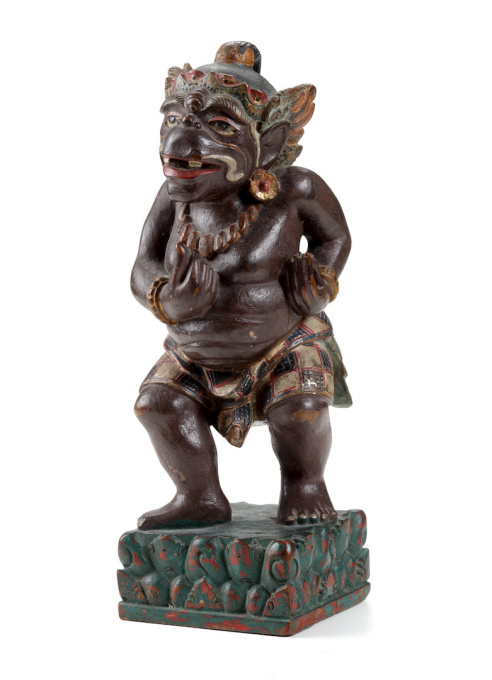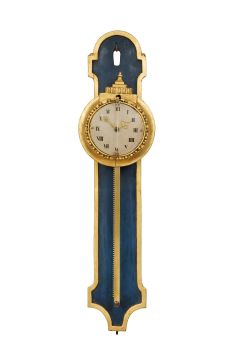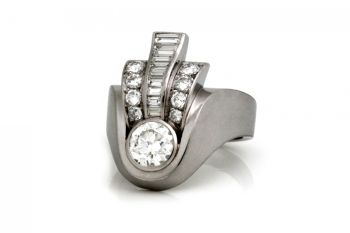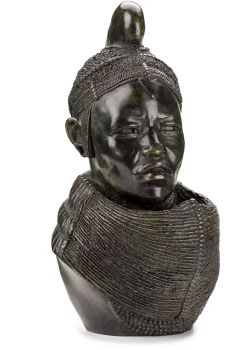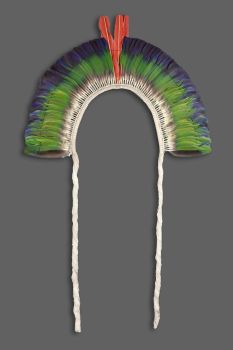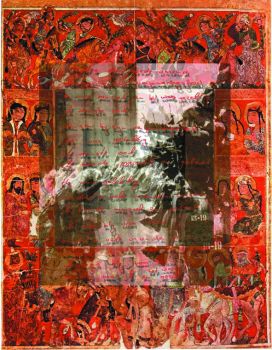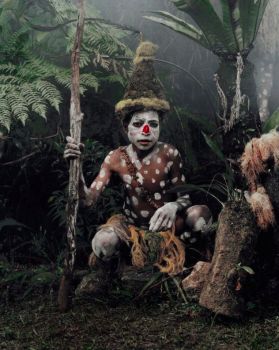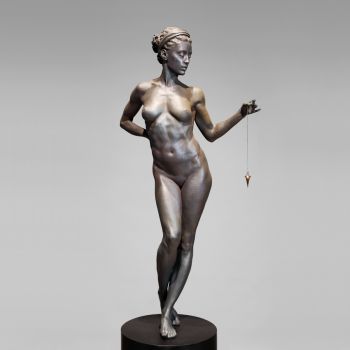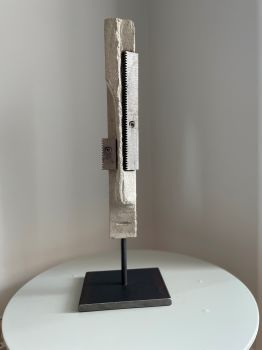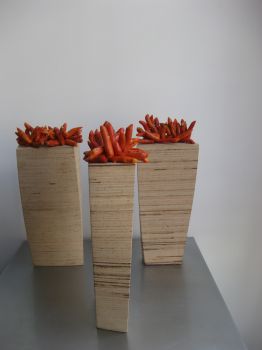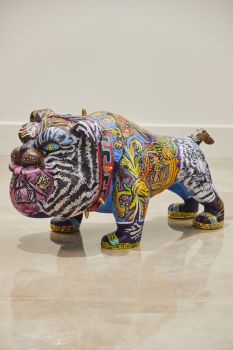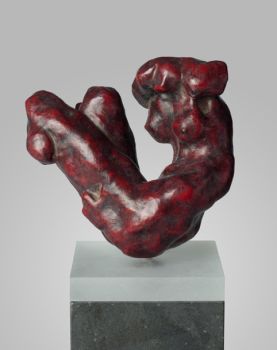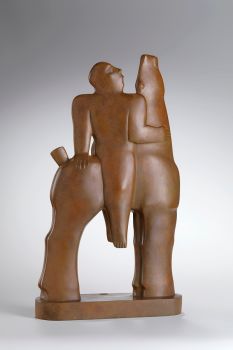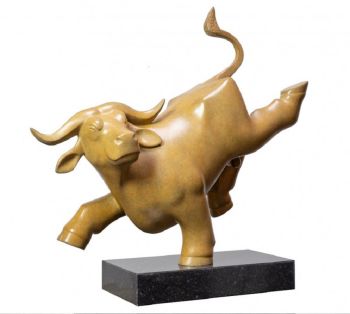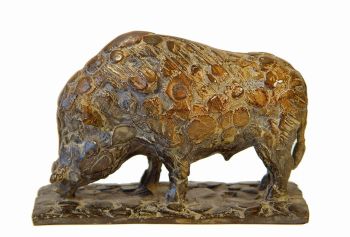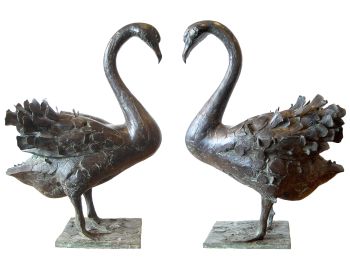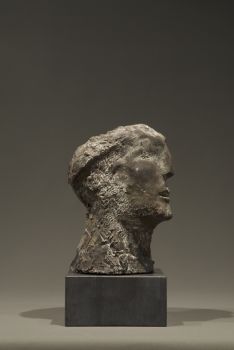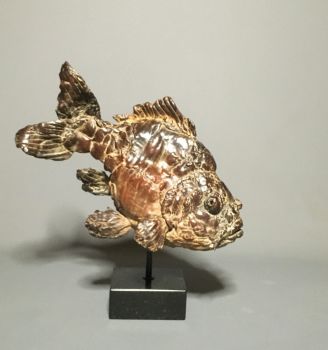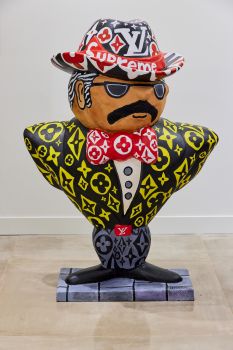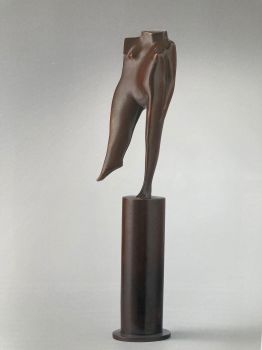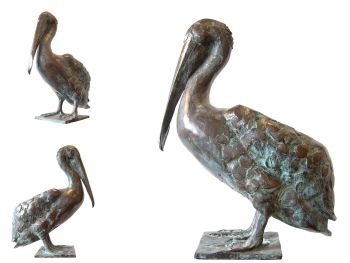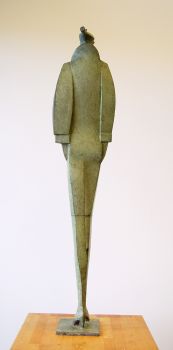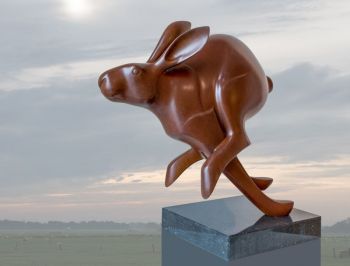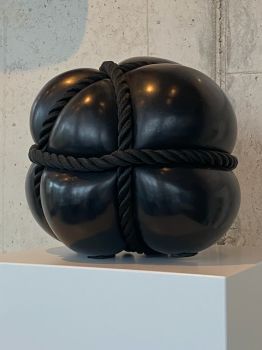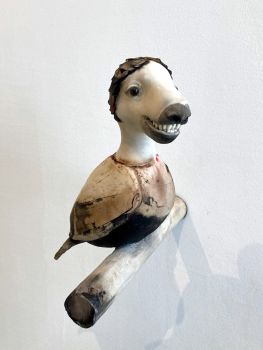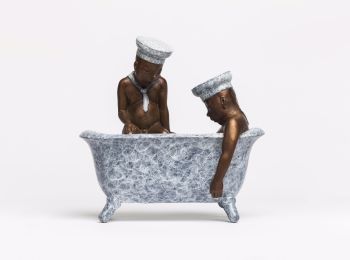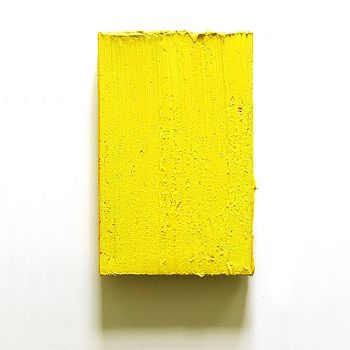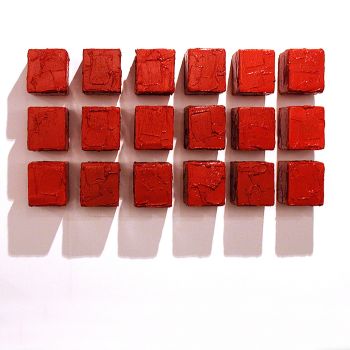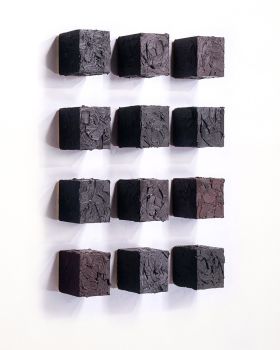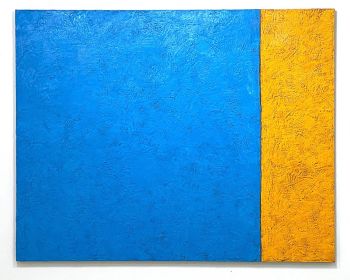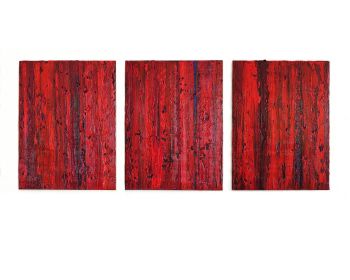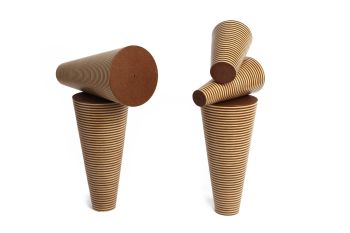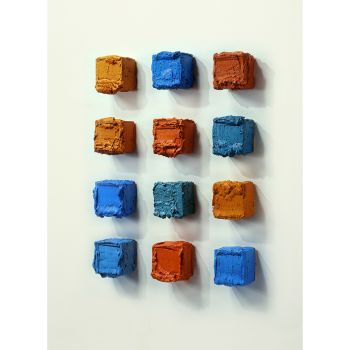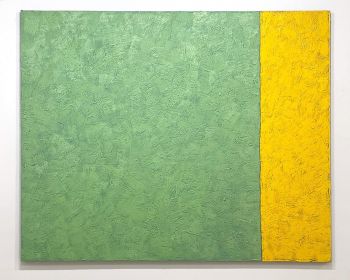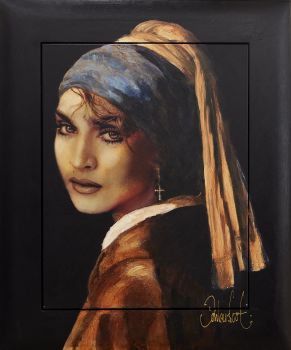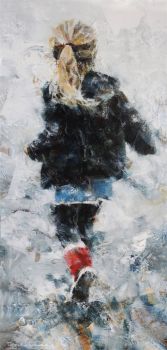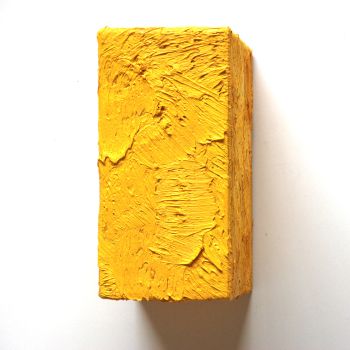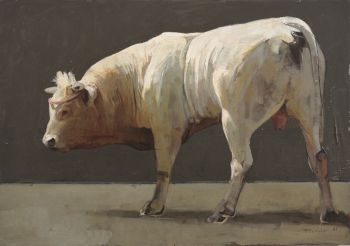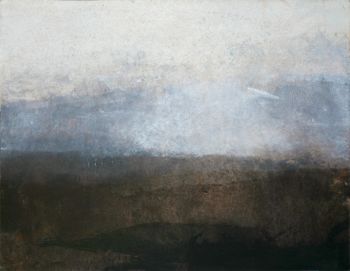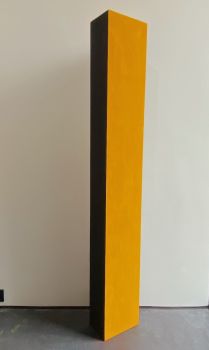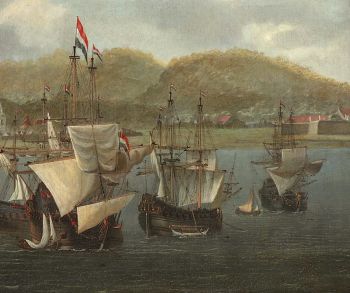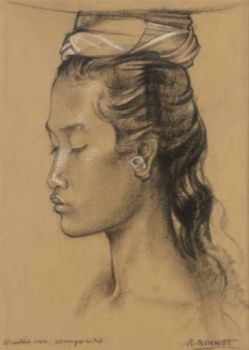UNA RARA ESTATUA DE MADERA POLICROMA BALINESA DE TWALES 1890 - 1910
Artista Desconocido
Madera
32 cm
Actualmente no disponible a través de Gallerease
Zebregs & Röell - Fine Art - Antiques
- Sobre la obra de arteNorth Bali, Singaraja, late 19th/early 20th century
Standing on a square lotus base, in dancing pose, wearing a traditional cloth and crown.
H. 32 cm
Note:
Twalen is the most powerful and mysterious of the four short, squat clown-like figures who serve as advisers and sidekicks of the main princely protagonist of Balinese stories. Known as punakawan, Twalen and his junior sidekick, Merdah, are on the side of the hero of the story, whereas Delem and Sangut, are on the side of the hero’s nemesis.
The roles of punakawan can be compared to the Shakespearean fool because they are wise, often wiser than the prince, despite their antics and uncouth behaviour. Twalen also carries a mystical aura of representing the old pre-Hindu gods. He is much revered in Bali. His Javanese counterpart is known as Semar.
The characteristics – short dwarf-like body, legs and arms, a large head with an animal-like snout, two widely spaced teeth, bare breast, large belly, checkered (kain poleng) sarong, a flower behind his ear – are all standard. The crown he wears indicates royal origins despite his rough exterior.
The statue was probably part of a set of four depicting all four punakawan. Such images were sometimes kept within temples but in the beginning of the 20th century also were produced to sell outside temples, to the Dutch.
We are grateful to Bruce Carpenter for his assistance with this catalogue entry.
- Sobre el artista
Puede suceder que un artista o creador sea desconocido.
Algunas obras no deben determinarse por quién está hecho o por (un grupo de) artesanos. Algunos ejemplos son estatuas de la Antigüedad, muebles, espejos o firmas que no son claras o legibles, pero también algunas obras no están firmadas en absoluto.
También puedes encontrar la siguiente descripción:
•"Atribuido a …." En su opinión, probablemente una obra del artista, al menos en parte.
•“Estudio de….” o “Taller de” En su opinión, una obra ejecutada en el estudio o taller del artista, posiblemente bajo su supervisión
•“Círculo de…” En su opinión, una obra del período del artista que muestra su influencia, estrechamente asociado con el artista pero no necesariamente su alumno.
•"Estilo de …." o “Seguidor de…”. En su opinión, una obra ejecutada al estilo del artista pero no necesariamente por un alumno; puede ser contemporáneo o casi contemporáneo
•"Manera de …." En su opinión una obra al estilo del artista pero de fecha posterior
•"Después …." En su opinión, una copia (de cualquier fecha) de una obra del artista
•“Firmado…”, “Fechado…” o “Inscrito” En su opinión, la obra ha sido firmada/fechada/inscrita por el artista. La adición de un signo de interrogación indica un elemento de duda.
•“Con firma…”, “Con fecha…”, “Con inscripción…” o “Lleva firma/fecha/inscripción” en su opinión la firma/fecha/inscripción ha sido añadida por alguien que no es el artista
¿Está interesado en comprar esta obra de arte?
Artwork details
Related artworks
- 1 - 4 / 12
Artista Desconocido
UN TOCADO DE PLUMAS TRIBU JURUNA1900 - 1950
Precio a consultarZebregs & Röell - Fine Art - Antiques
1 - 4 / 8- 1 - 4 / 24
- 1 - 4 / 24
Artista Desconocido
UN TOCADO DE PLUMAS TRIBU JURUNA1900 - 1950
Precio a consultarZebregs & Röell - Fine Art - Antiques
Artista Desconocido
UN NETSUKE DE MARFIL DE UN HOLANDÉS CON UNA COCKEREL18th century
Precio a consultarZebregs & Röell - Fine Art - Antiques
1 - 4 / 12

